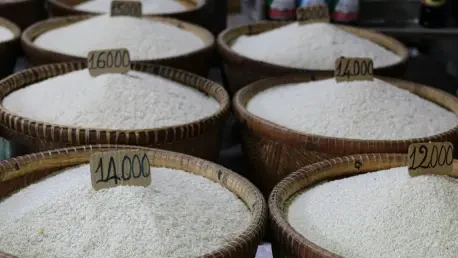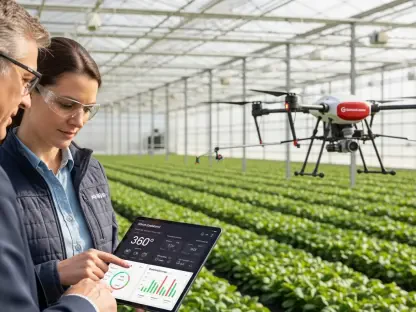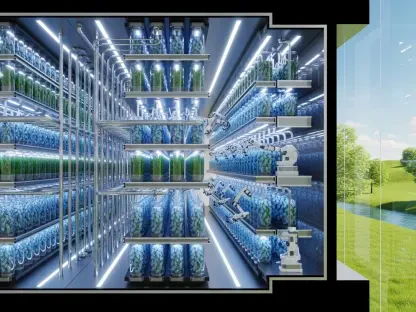In today’s rapidly evolving agricultural landscape, supply chain issues can significantly impact food security and economic stability. Kwame Zaire, a manufacturing expert renowned for his insights on predictive maintenance, quality, and safety, talks with us about Japan’s recent rice shortage—a situation that has forced the nation to import rice from South Korea for the first time in over 25 years. This interview delves into the intricate dynamics of Japan’s rice supply chain and the broader implications for consumers and producers alike.
Can you explain the primary reasons for Japan’s current rice shortage?
Japan’s rice shortage results from several interconnected factors. Severe summer heat in 2023 led to subpar harvests, while subsequent consumer panic over natural disasters like typhoons and earthquakes depleted national reserves quickly. Moreover, logistical challenges have compounded the crisis as essential resources struggle to reach supermarket shelves, creating a significant bottleneck in distribution.
What are the implications of Japan importing rice from South Korea for the first time in over 25 years?
This development signals a notable shift in Japan’s trade dynamics. Traditionally, Japan has tightly controlled rice imports, with consumers often wary of foreign grains. By turning to South Korea, a long-avoided source, it highlights both the urgency of the shortage and a gradual change in consumer acceptance of non-local rice, likely stimulated by a pressing demand for stable supplies.
How have domestic rice prices changed recently, and what factors have contributed to these changes?
Domestic rice prices have surged over the past year, more than doubling from previous figures. The price hike results from constrained supply chains, reduced domestic harvests due to extreme weather conditions, and heightened consumer demand amid fears of escalating shortages.
Could you elaborate on the supply chain challenges Japan is facing with rice distribution?
Supply chain hurdles are significant. Lack of delivery vehicles and lengthy preparation processes are central issues delaying rice distribution to supermarkets. This has resulted in a situation where, despite having some reserve stocks, getting the rice to consumers in a timely and efficient manner becomes challenging. The logistical constraints exacerbate the rice’s availability in retail environments.
How has the Japanese government’s intervention helped address the rice shortage?
The government released 210,000 tonnes from national rice reserves in an attempt to stabilize the market. While typically reserved for emergencies like poor harvests or natural disasters, this move was imperative to manage the immediate spike in consumer prices and availability. However, challenges remain, predominantly in terms of distribution logistics.
In what ways is the rice shortage affecting Japanese consumers’ attitudes towards imported rice?
Consumers are gradually becoming more receptive to imported rice as a viable alternative. Some restaurants have even transitioned to using American rice, driven partly by rising costs of domestic rice and the comparative affordability of imported options like Calrose from California, despite its own price increases.
Are there any policies that are limiting local rice production, and how are they impacting the current situation?
Yes, Japan has policies that limit local rice production to stabilize market prices, focusing on non-table rice production for processed foods and feeds. These subsidies reduce land available for consumer rice, thus constraining the overall local production capacity and intensifying the reliance on imports during shortages.
What role do subsidies for non-table rice play in Japan’s agricultural strategy, and how has this affected rice availability?
Subsidies for non-table rice have historically influenced Japan’s agricultural landscape by prioritizing rice for processed foods or animal feed over table rice. While this strategy aims at price stabilization, it inadvertently limits the flexibility to ramp up table rice production, especially amidst unexpected demand spikes or supply chain strains.
How is the demand for imported rice changing the landscape for local farmers?
The growing reliance on imported rice challenges local farmers who face a competitive disadvantage due to high production costs. Many farmers are compelled to diversify their production beyond table rice to maintain profitability, affecting their role in the domestic market and overall agricultural strategy.
What are some suggested solutions to enhance Japan’s rice supply chain resilience?
Improving supply chain resilience can be achieved through structural reforms like integrating digital record-keeping and blockchain technologies. These tools enhance transparency, enabling precise tracking and quick responses to distribution issues. Strengthened collaboration across various sectors, including government and technology, is crucial for refining logistical processes.
How could these supply chain issues affect Japan’s broader food security and staple food prices?
These supply chain constraints could significantly affect Japan’s food security, leading to sustained shortages and higher prices across staple foods. Improving logistical efficiency and local production capabilities is essential for ensuring that stable, affordable food supplies are maintained, securing broader economic stability.
Are there any long-term strategies being considered to prevent similar supply chain issues in the future?
Long-term strategies emphasize developing a more robust supply chain infrastructure. This includes fostering greater collaboration between sectors, investing in technology for real-time supply chain management, and potentially revisiting agricultural policies to allow more dynamic production responses to changing market conditions.
Do you have any advice for our readers?
Stay informed about the origins of your food and the complexities behind its availability. Understanding these dynamics can help you make more conscious choices and advocate for policies that prioritize sustainable and resilient farming practices. Knowledge is key to navigating and mitigating the ups and downs of global food supply chains.









